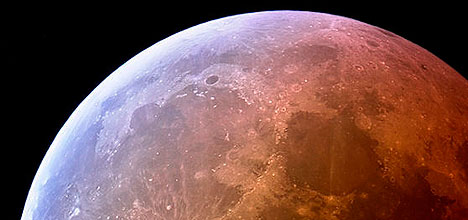People expecting to see the moon change into a rich shade of pink and blue in the early hours of this morning were disappointed when cloud blanketed the lunar eclipse in the Western Bay of Plenty.
The eclipse was expected to be seen over Tauranga skies between 1.46 to 5.18am but turned out to be a non-event due to cloud cover.
Tauranga Astronomical Society secretary Jim Barrowclough got up at 4am to watch the eclipse through binoculars at his home in Cherrywood, but says all he could see was cloud.
'Unfortunately it was too cloudy and we couldn't see anything. It is a pity really as this eclipse only happens every few years.”
Jim says others around New Zealand and Australia may have witnessed the event, with the total eclipse, where the moon is completely behind the earth's shadow, lasting 51 minutes between 3:06 am until 3:57 am.
'Australia may have seen it but it would have been a bit later there, so they may not have seen as much of it as we would.”
However, Jim says he spoke with a number of people from the society who attempted to view the eclipse in Tauranga and none were able see it.
Associated Press is reporting the lunar eclipse was visible throughout Japan, China, southeast Asia, Hawaii and the United States.
Due to the low hanging moon in this eclipse, Jim says not only will the moon have been a beautifully red colour, it will also be inflated by the moon illusion.
He says for reasons not understood by astronomers low-hanging moons look unnaturally large when they beam through trees, buildings and foreground objects, and in this case the eclipse will have appeared super-sized.
The last lunar eclipse able to be observed in New Zealand was a total lunar eclipse in June of this year, but New Zealanders were only able to watch the first half of the eclipse before the Moon set.
There are no total lunar eclipses in 2012 but the Stardome Observatory and Planetarium in Auckland says New Zealand can view two major celestial events next year; the transit of Venus across the face of the sun on June 6, and a solar eclipse on November 14.



0 comments
Leave a Comment
You must be logged in to make a comment.